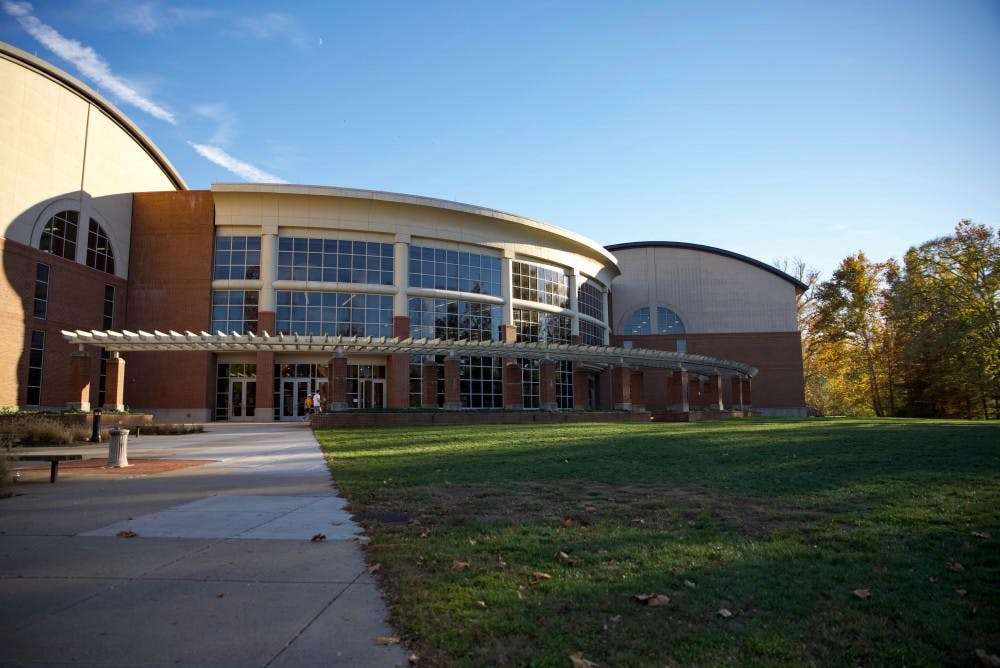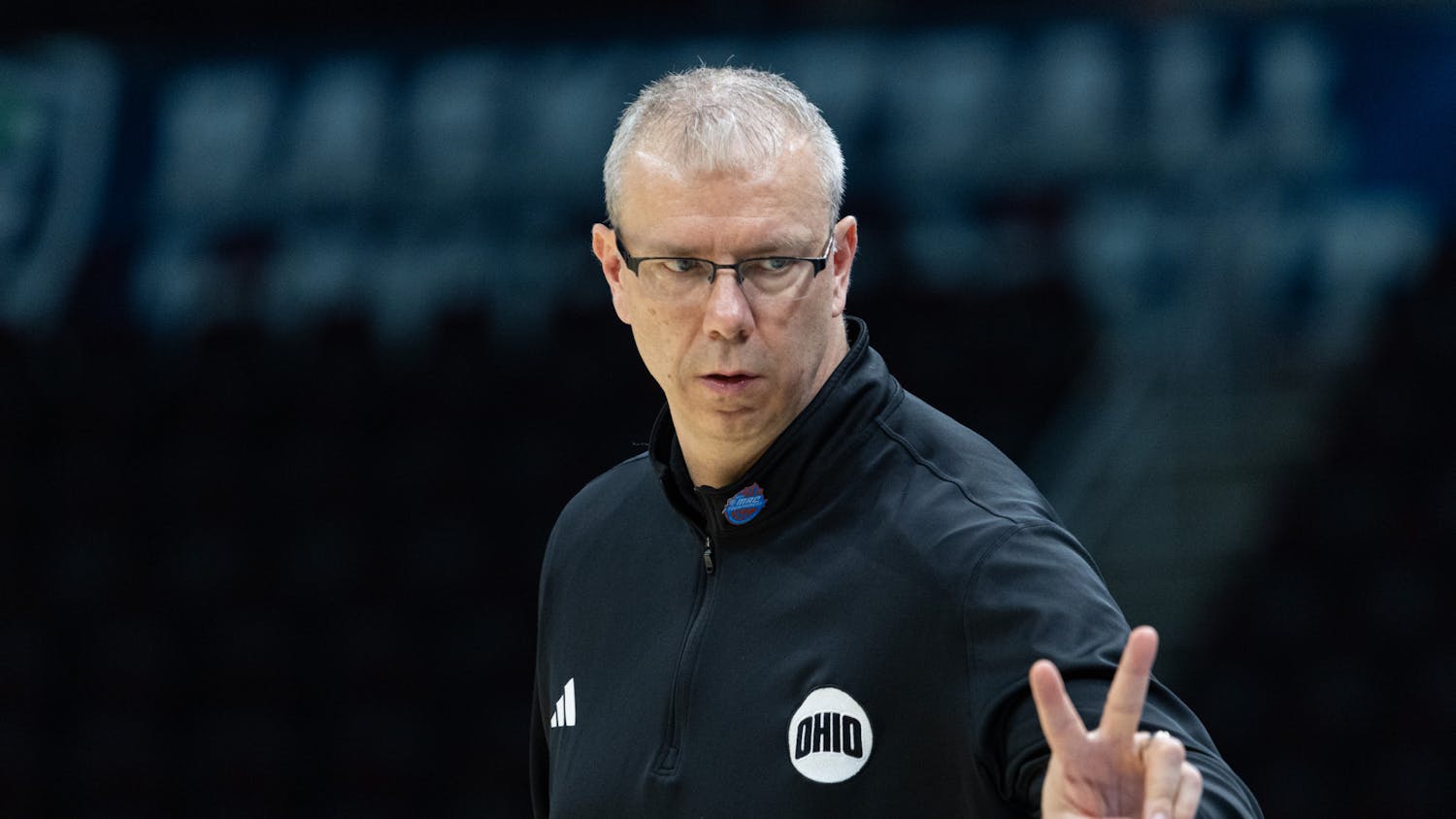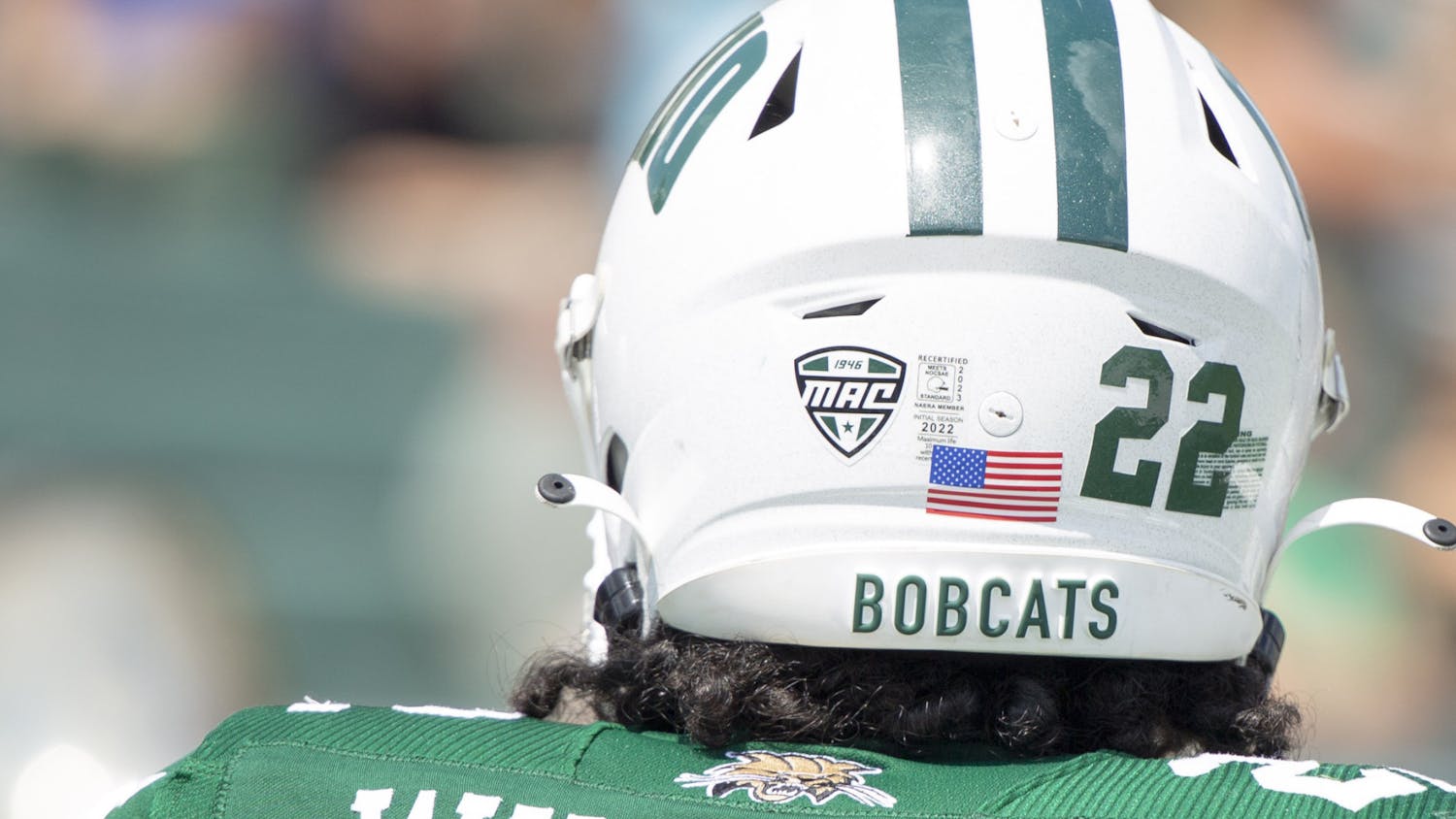As students take to the treadmills at Ping Recreation Center, looking to stave off the "freshman 15" or work off last night’s Court Street eats, the walls surrounding them are sinking farther into the ground.
This summer, Ohio University will embark on an emergency project to stabilize the underlying soil and make necessary interior repairs to Ping Center, following the discovery that the 168,000 square foot building is set upon unstable clay.
Recently conducted geo-technical tests to determine the cause of the settling revealed weak native soils — specifically clay deposits — to be the culprit. The upcoming project aims to prevent further settlement and repair the damaged interior walls, Greg Robertson, associate vice president for architecture, design and construction, said.
Ping Center, which has been a fixture on OU’s campus since 1996, is the most expensive student recreation center of Ohio’s MAC schools at a construction cost of $26 million, according to a previous Post report.
Another $1.4 million will soon be taken from the Century Bond Emergency Projects Fund to go toward remediation efforts, which will begin with additional surveying in May, with the goal of completion in August. An estimated $140,000 will be spent on project design, and $1.26 million will go toward construction.
“When we were talking about the challenges of putting together the CIP (Capital Improvement Plan) … this is $1.4 million of next year’s $2.5 million already spent,” Vice President for Finance and Administration Deborah Shaffer said. “This is how fast those dollars go with these crisis projects."
Over the course of several years, noticeable cracks have developed on a number of non-load bearing concrete walls on the facility’s first floor. Photographs displayed during the March Board of Trustees meeting showed doors in the building that can no longer close, as the door frames have sunk.
“If designed correctly, a building can be built to bear on bedrock or good soils below the soft soils that cover much of campus,” Robertson said. “The new dorms are fine, and all of the structural members in the Ping Center are fine. The Ping Center was designed with a floating slab that rests on the soils below, and that design proved unsatisfactory as constructed.”
If necessary, the university will investigate previous contracts made with contractors to determine whether past negligence may have played a role in the current problems, Robertson said.
During the Board of Trustees meeting, Trustee David Scholl questioned the draining capacity of the area around the recreation center, citing Ping as an “enormous building,” on the same level as other residential and classroom buildings.
Although the facility sits on ground level with the newly constructed South Green residence halls, Robertson maintained that those buildings are unaffected and reiterated the safety of Ping Center.
“The upper stories are not affected, and the building is safe to occupy,” Robertson said. “But some of the damage inside can be rather striking.”






